|
  |
|
Page 4 |
Newsletter 134 Autumn 2021 © Hampshire Mills Group |
|
Heron Corn Mill
Ruth
Andrews
Photos by Keith Andrews
|
This is an outstanding example of a preserved
Cumbrian manorial corn mill
situated
at Beetham on the River Bela, a tributary of the
River Kent which flows into Morecambe Bay. It is a
grade 2* listed stone-built 3-storey mill, and its
internal machinery was restored to full working
order in 2008-9 by Martin Watts, with additional
Heritage Lottery Funding in 2012.
|
 |
|
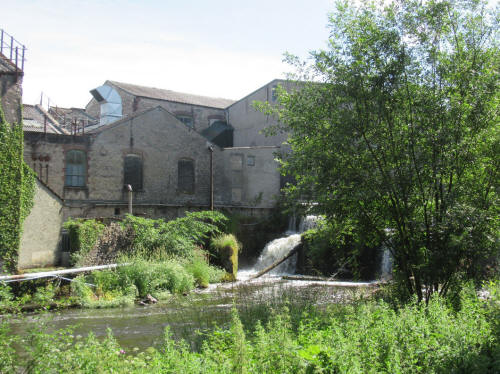
|
The present mill and an adjacent barn (above)
was built on an older site in 1740. It is one of
two water mills at Beetham, one on each side of the
river with shared water rights where there was a
natural weir. By 1788 the second mill (left)
had become a paper mill, which it still is today,
although it has greatly expanded.
|
|
By 1927 Heron Mill was grinding only animal feed and
it closed in 1958, to become an agricultural store
and henhouse. It was subsequently purchased by
Henry Cooke Ltd, owners of the paper mill, and later
a trust was set up to begin its restoration.
In 2009-10 a 100kW Kaplan turbine was installed in a
separate turbine house. Surplus electricity is sold
to the paper mill opposite. This is not the first
time that electricity was generated here; in the
early 20th century a small external waterwheel
connected to a generator powered lighting at the
mill right up to 1974.
Keith and I were extremely fortunate to attract the
attention of Iain McNicol who was unloading sacks
despite the mill being closed to the public. He
enthusiastically stopped working to show us round:
so this is what we saw.
|
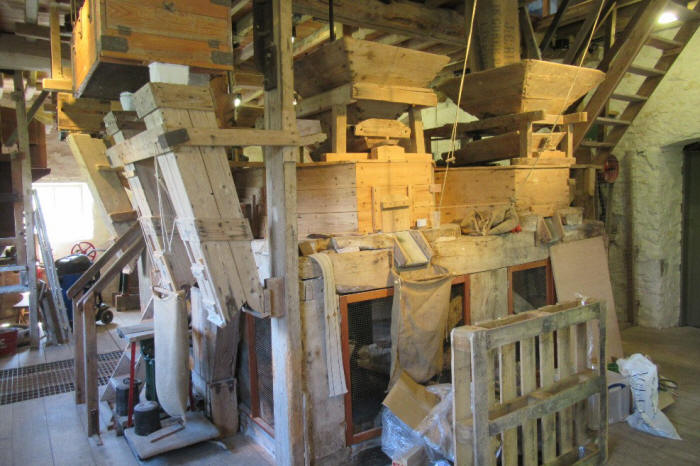 |
|
Heron Corn Mill is a lowder mill; this
refers to the large free-standing oak frame in the
centre of the milling floor that supports the 4
pairs of stones and their stones furniture, and acts
as a gear room for the great spur wheel and stone
nuts. This arrangement used to be more common
locally, but it is the first time that we have
encountered it. It certainly makes photography much
easier, but causes problems when the millstones need
to be lifted for dressing – there is no safety net
for the millwright when he falls off the lowder.
|
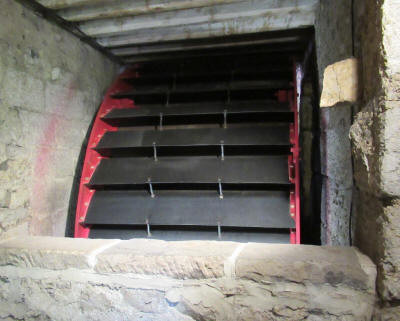
The 14ft breastshot waterwheel is situated inside
the bottom floor of the mill and water enters from a
wooden launder. The pit wheel engages with the
wallower on a magnificently stout green-painted
upright shaft, but there is also a belt drive to the
stones floor. The great spur wheel under the lowder
meshes with up to 4 cast-iron stone nuts with wooden
cogs, on spindles which are supported by bridge
trees for tentering the runner stones.
|
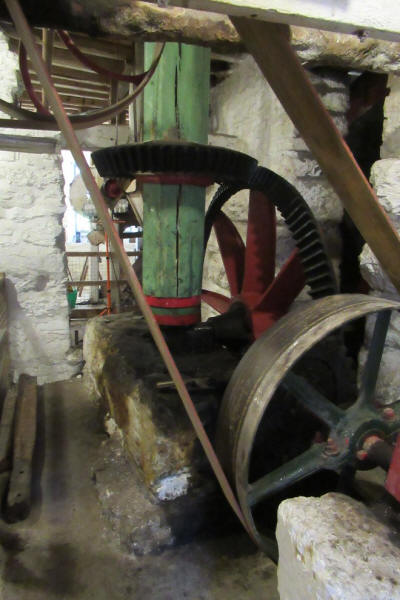 |
|
Iain demonstrated the very unusual and perilous
method of raising the stone nuts into mesh. It
involves two pieces of wood: a long forked lever
that has to be balanced on a Y-shaped piece with
reinforced tips which rest in 2 holes in the lowder
frame. We would not have worked out how these were
used on our own.
|
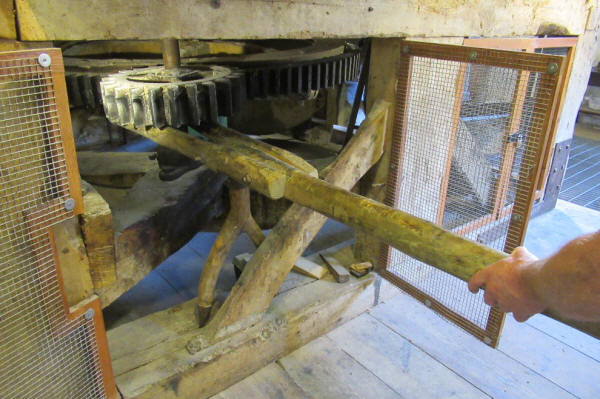 |
|
The millstones currently in use are 2 sets of
Derbyshire grit stones, one set of French burrs, and
one set of worn French burrs which have been given a
new lease of life with a layer of carborundum; they
are the only ones like it in Cumbria.
The lowder frame also supports jiggers (like small
plansifters) and a precarious ladder to the bin
floor. Of course, there are also wooden elevators
and chutes.
|
|
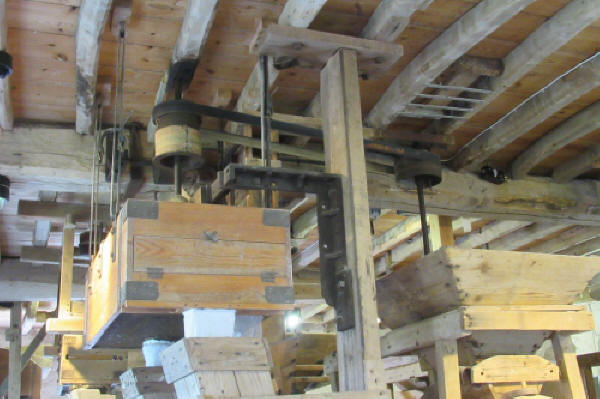 |

|
|
When grain arrived at the mill it frequently had to
be dried in a kiln. At Heron this is situated in a
separate room on the ground floor with the drying
room above. When dry, the grain was swept into a
hopper and poured into sacks, which were taken up to
the bin floor and put into a hopper over one of the
millstones. This is used to shell the oats before
the outer husks and groats are separated in the
winnower on the ground floor. They then travel back
up a bucket elevator to the top of the mill before
being tipped into a second set of stones which grind
them into oatmeal or flour.
At the end of our visit we also met Stuart Hobbs,
the resident miller, who supervises the operation of
the milling machinery and is responsible for all the
necessary checks and maintenance, as well as
monitoring the turbine output and taking visitors on
tours of the mill. We would like to thank Iain and
Stuart for allowing us to look round the mill on a
day when it was not officially open, and for giving
us lots of interesting ‘insider’ information. It is
an outstanding site which is enthusiastically
presented. For more information see
www.heronmill.org
.
|
|
  |
|
|
